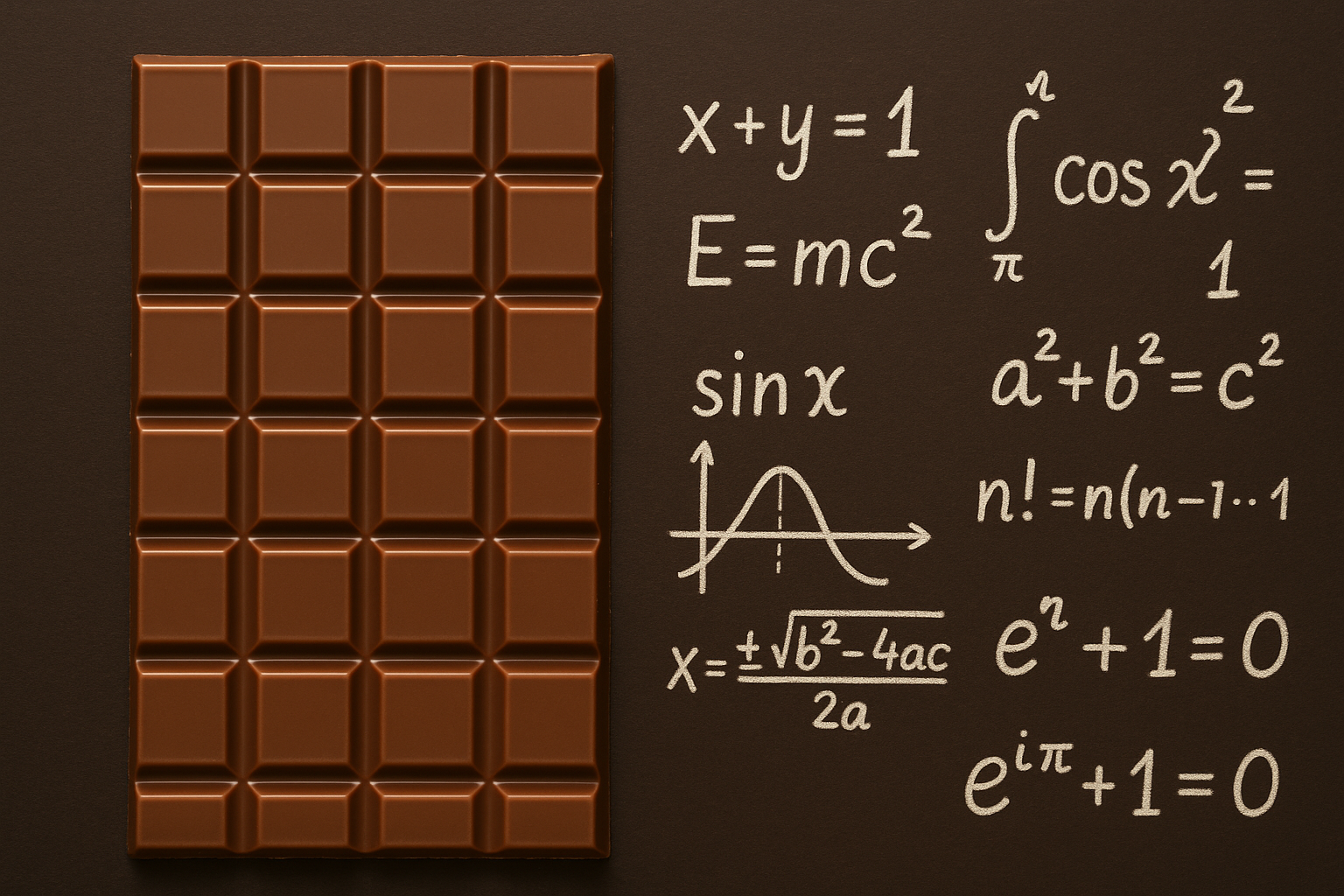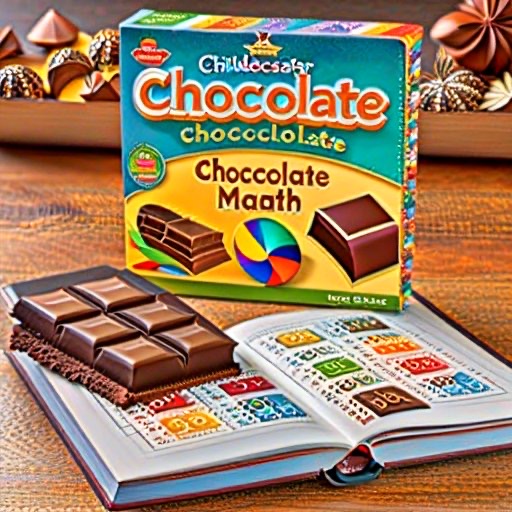Turning Fractions and Formulas into Flavourful Fun
Chocolate has a universal appeal, captivating both young and old alike. But it’s more than a sweet treat it’s a powerful learning tool.
By using chocolate to explain mathematical concepts, educators can turn abstract ideas into something tangible, engaging, and delightfully edible.
Whether you’re helping students grasp fractions or inspiring future scientists, maths with chocolate offers a multisensory approach that makes learning memorable and a little bit magical.
Fractions & Proportions
A classic maths challenge becomes far tastier when chocolate is involved.
Imagine scaling up a recipe for chocolate chip cookies doubling or halving ingredients like flour, butter, and cocoa powder. Students can experiment with ratios and proportions, calculating ingredient quantities for different batch sizes.

Geometry and Shapes
Chocolate takes countless forms bars, truffles, spheres, and squares making it the perfect medium for exploring geometry in action.
Ask students to:
Calculate the surface area of a chocolate bar.
Compare the volume of different chocolate shapes.
Explore symmetry, tessellation, and 3D forms using chocolate packaging.
By visualising geometry through chocolate, abstract shapes suddenly become something they can hold, measure, and eat connecting the classroom to the confectioner’s world.
Measurement and Conversion
Precision is the secret ingredient in chocolate-making.
From melting cocoa butter to tempering chocolate, accuracy in grams, millilitres, and degrees Celsius is key.
Use these culinary contexts to teach:
Metric conversions (grams ↔ kilograms, millilitres ↔ litres).
Temperature reading and control.
Scaling recipes for different class sizes.
By mastering measurement through chocolate, students discover the practical power of maths in everyday life.
Data Analysis and Graphing
What’s your favourite flavour dark, milk, or white?
Turn this question into a classroom data project. Students can collect taste preferences, record their results, and use the data to create bar graphs or pie charts.
This sweet survey introduces data handling, visualisation, and statistical thinking proving that maths doesn’t have to be dry when it’s dipped in chocolate.
Problem Solving and Critical Thinking
Chocolate challenges creativity and logic alike.
Set students real-world tasks such as:
Designing a chocolate box that minimises wasted space.
Calculating ingredient costs for a recipe.
Estimating the energy value (calories) of a bar using nutritional data.
Through these open-ended problem-solving exercises, maths becomes more than a subject it becomes a skill for life, connecting economics, design, and food science.
As we wrap up this exploration of chocolate-infused mathematics, one truth stands out: learning is sweetest when it’s meaningful, hands-on, and shared.
By blending chocolate and mathematics, educators can inspire curiosity, collaboration, and a lifelong love of learning one square at a time.
#ChocolateAndMathematics #MathsWithChocolate #ChocolateLearning #STEMEducation

